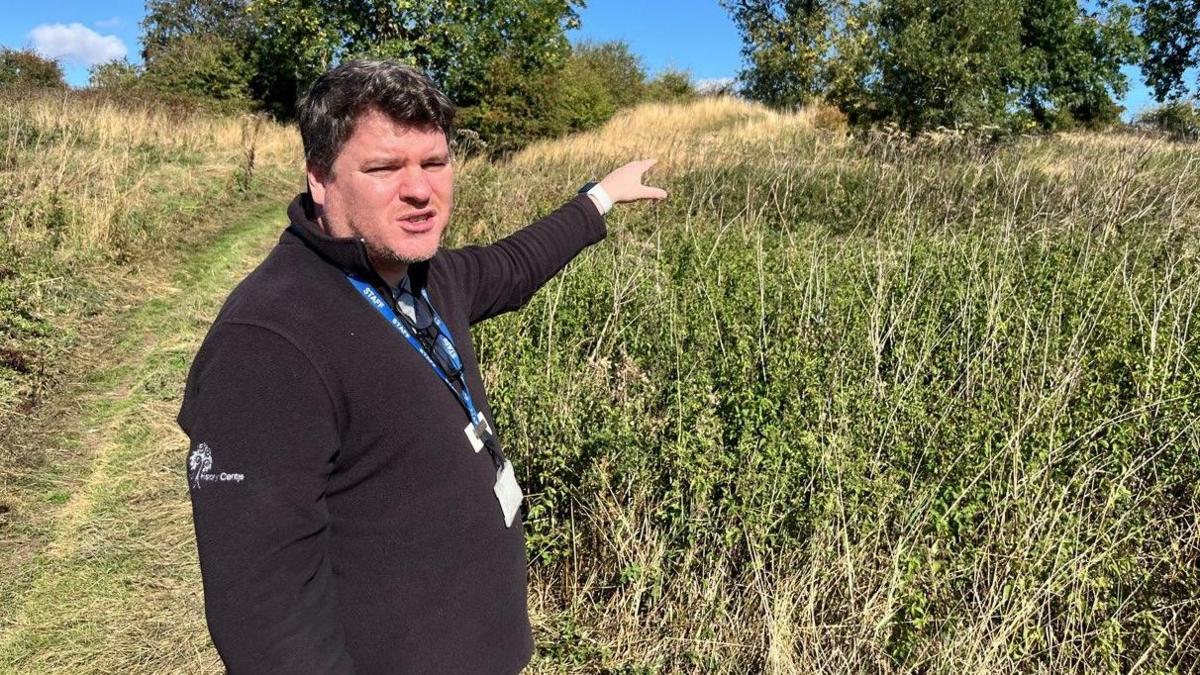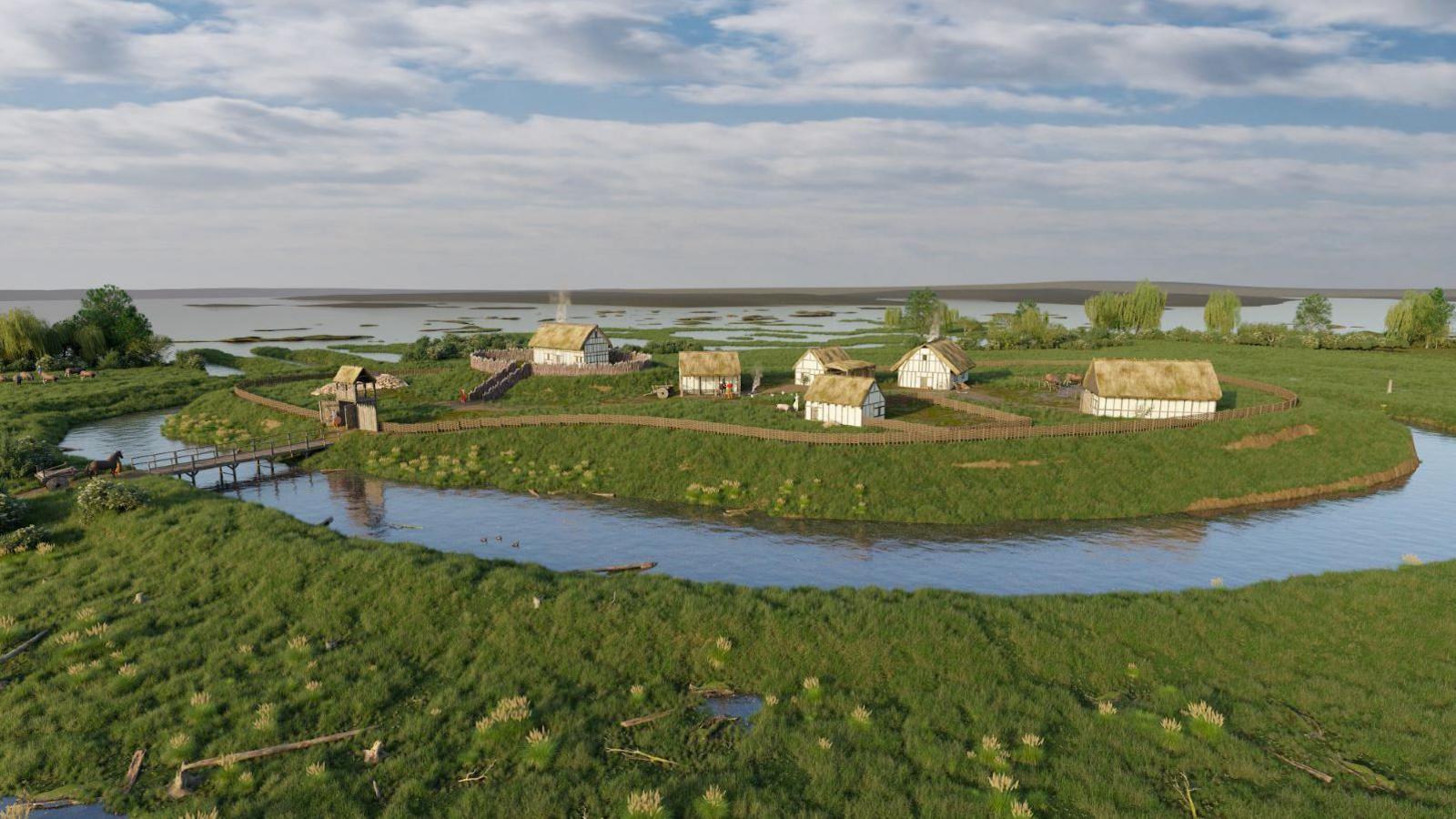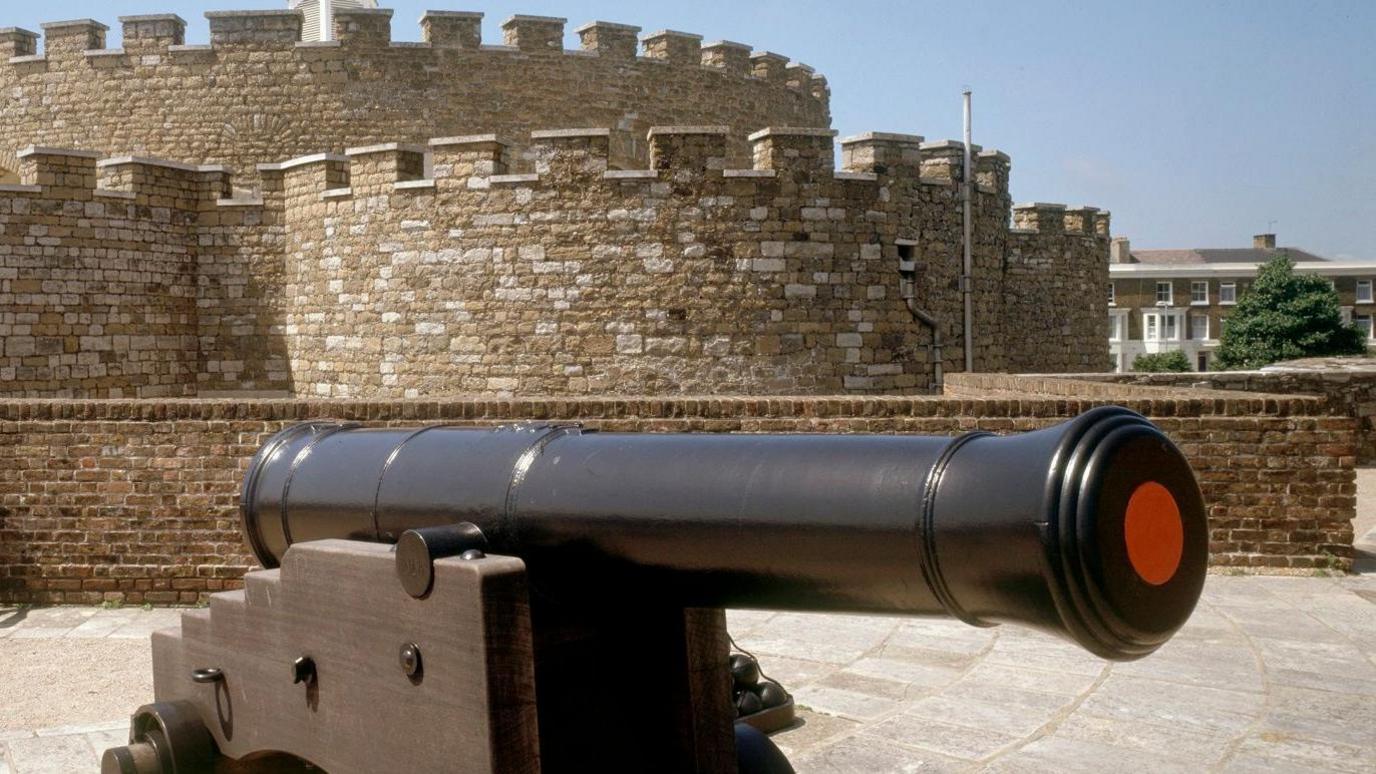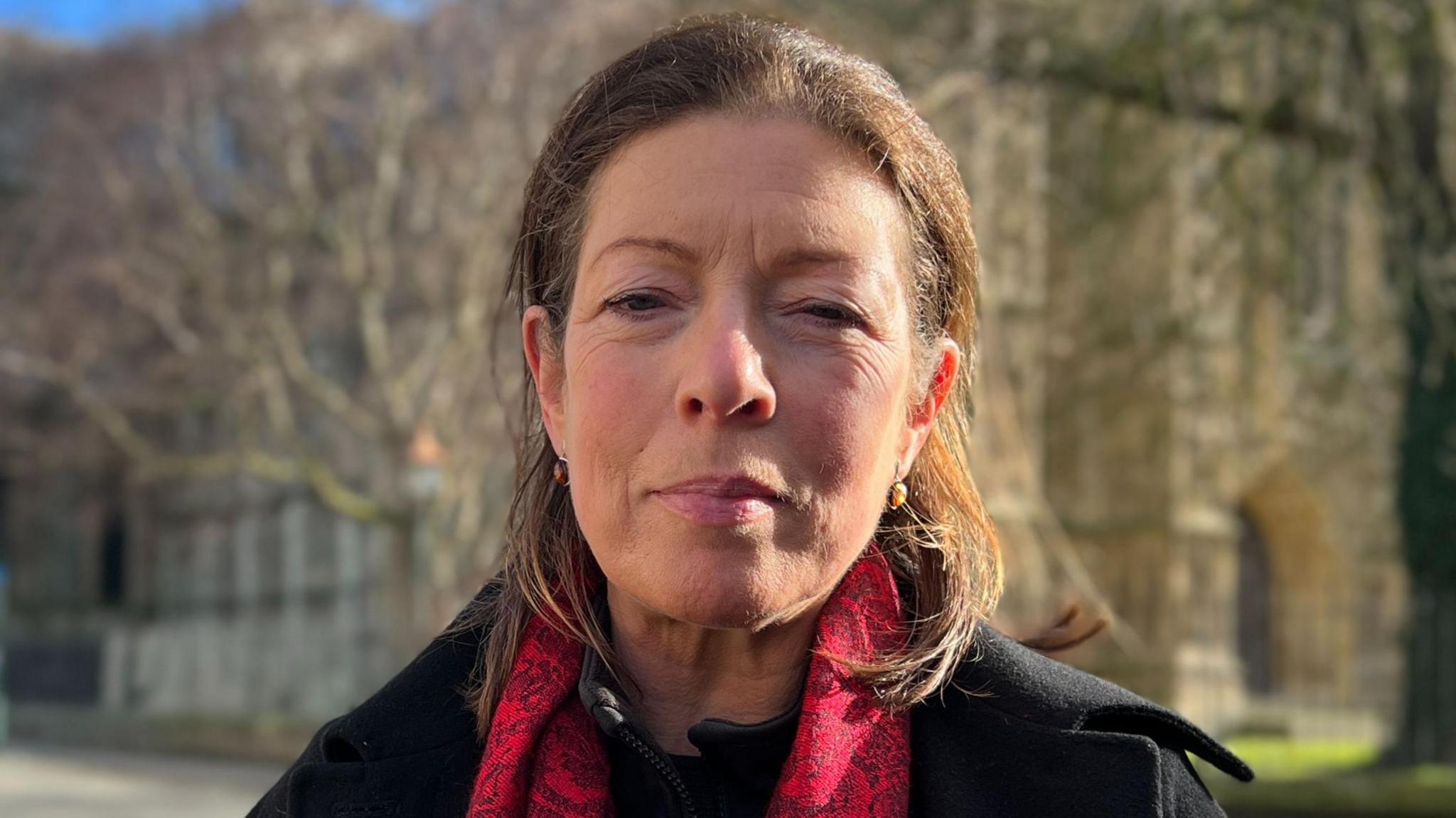The forgotten castle on the outskirts of Hull

Neil Chadwick, librarian and archivist at Hull History Centre, says the Bransholme location was a "perfect place to build a castle"
- Published
What is now a series of lumps and bumps on a hillside on the outskirts of Hull was once a bustling castle estate.
In the 12th Century Bransholme Castle sat on a mound better known today as Castle Hill, sandwiched between the villages of Sutton and Swine.
Described as a "hive of activity" in its heyday, it is thought the fortress was built during a succession crisis, which led to a period known as the Anarchy.
But who built it and why exactly was it there?
In December 1135, King Henry I died. His nephew, Stephen of Blois, inherited the crown instead of the king's daughter, Empress Matilda.
This triggered a 20-year civil war known as the Anarchy.
There was an upsurge in castle building during this period. Royal authority had crumbled and anybody who could build a castle did.
It is thought Sayer, Lord of Sutton, built the fortress for protection during the civil war.
At this time, castles were often built in unusual places, due to most of the primary strategic sites being taken after the Norman invasion of 1066.

An artist's impression of Bransholme Castle and its fortress, with wooden bridge, moat and thatched-roof houses
It is believed Sayer chose Bransholme because it was an island in the vast flooded area then known as North Carr.
"It's a perfect place to build a castle," Neil Chadwick, librarian and archivist at Hull History Centre, says.
"It is a formidable place to attack."
Neil has explored the location as part of the Hidden East Yorkshire Podcast.
"Looking now, we are surrounded by fairly flat land but back in the Middle Ages, that would have been a great expanse of water," he says.
"It would have been swamp, it would've been marshland, so anybody who didn't know how to navigate it, they would succumb to the waters.
"Before you even get to Bransholme Castle, you've got to navigate the marshes as well - a very challenging task."
Neil believes the whole area would have been surrounded by a moat that filled up just beyond the palisade. Inside this would have stood a motte-and-bailey castle.
"The motte is the great big mound of earth where the lord's tower would stand upon," he explains.
"The bailey is the area below that houses all the ancillary buildings, perhaps a small chapel, kitchen, bakery, blacksmith's, stables."
Bransholme Castle: A fortress born of civil war
Neil says the castle would have been a "hive of activity".
"You'd have had staff, chamberlains, constables, all tending to the castle's day-to-day running, while its lord sits in his tower, collecting taxes, issuing various orders, sending his men out into the countryside to patrol it and make sure the king's peace is kept."
Eventually, the Anarchy came to an end when Stephen agreed that Matilda's son, the future Henry II, should succeed him as king.
These days, Bransholme Castle is just a "series of lumps and bumps".
"You wouldn't think it was the site of a castle, but the clue's in the name - Castle Hill," Neil adds.
"People wouldn't give it a second glance, but look closer at history, and it was Bransholme's very own castle."
Listen to highlights from Hull and East Yorkshire on BBC Sounds, watch the latest episode of Look North or tell us about a story you think we should be covering here, external.
Download the BBC News app from the App Store, external for iPhone and iPad or Google Play, external for Android devices
- Published30 March

- Published16 February

- Published16 March

Related internet links
- Attribution